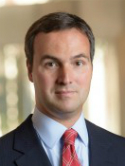Looking ahead! The feasibility of implementing remote patient monitoring for high-risk oncology patients Journal Article
| Authors: | Mazzella-Ebstein, A.; Dunnack-Yackel, H.; Daly, R. M.; Salner, A. L.; Eanniello, M. K.; Fontaine, S.; Huang, J.; Bernal, C.; Wilhelm, C.; Ackerman, J.; Panageas, K. S.; Kuperman, G.; Mao, J.; Barton-Burke, M. |
| Article Title: | Looking ahead! The feasibility of implementing remote patient monitoring for high-risk oncology patients |
| Abstract: | Background: The goal of posthospital care delivery is to improve patient access to providers and prevent unnecessary readmissions. This study assessed the feasibility, barriers, and facilitating factors of implementing remote patient monitoring (RPM) for oncology patients at the Hartford HealthCare Cancer Institute (HHC), Hartford CT, and a state-wide healthcare system. Methods: A multi-model holistic approach to quantitative surveys, and qualitative interviews and focus groups were used to collect insights from hospital stakeholders about the culture, learning, leadership, and resources for implementing RPM. Stakeholders from HHC responded to the survey between September 1st through September 30th, 2022. The frequency and percentage distributions for survey item responses were calculated. Items with the highest percentage and frequency of neutral and disagreement responses informed the interview guide. A purposeful sample of hospital stakeholders and patients were recruited for interviews and focus groups, which were conducted from January 1st through January 30th, 2023. Current and future state organizational maps of clinical care models and processes were developed. Results: Sixty-three stakeholders were sent the Readiness for Implementation Survey and 53 responded through an email link to a web-based database (84% response rate). Responses supported RPM to improve patient care (67%). Interviews and focus groups elicited stakeholder perceptions of implementing change, the change climate, available resources, and barriers and facilitators of RPM. Stakeholders (n = 78), inclusive of the 63 survey recipients, plus 15 stakeholders from the Cancer Patient and Family Advisory Council (PFAC) and hospital staff, agreed to participate in interviews and focus groups. Fifty-two individuals (67% response rate) agreed to participate. Eight individual interviews and 6 focus groups were conducted. The emerged themes included integrating change into hospital systems, relevance to patient care teams, and patient- and family-centered care. Subthemes were subsequently explored. Conclusion: Stakeholders endorsed using RPM to improve communication among providers and patients’ access to care. Providers underscored key elements for program success that include a designated intervention team, strategies to assess symptom alerts, and an enterprise-wide availability of clinical data in future RPM development. Patient stakeholders emphasized integrating a patient-centered approach to RPM development. © The Author(s) 2025. |
| Keywords: | clinical article; oncology; drug therapy; feasibility; cancer; human; article; malignant neoplasm; usability; stakeholders; remote patient monitoring; telemonitoring |
| Journal Title: | BMC Health Services Research |
| Volume: | 25 |
| ISSN: | 1472-6963 |
| Publisher: | BioMed Central Ltd. |
| Date Published: | 2025-07-03 |
| Start Page: | 918 |
| Language: | English |
| DOI: | 10.1186/s12913-025-12947-8 |
| PUBMED: | 40611090 |
| PROVIDER: | scopus |
| PMCID: | PMC12224688 |
| DOI/URL: | |
| Notes: | Article -- MSK Cancer Center Support Grant (P30 CA008748) acknowledged in PubMed and PDF -- MSK corresponding author is AnnMarie Mazzella-Ebstein -- Source: Scopus |
Altmetric
Citation Impact
BMJ Impact Analytics
MSK Authors
Related MSK Work











